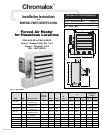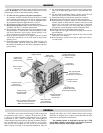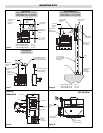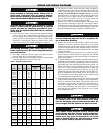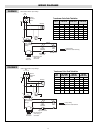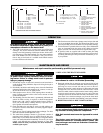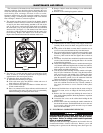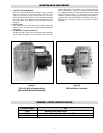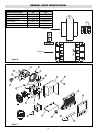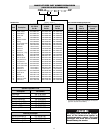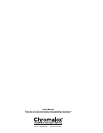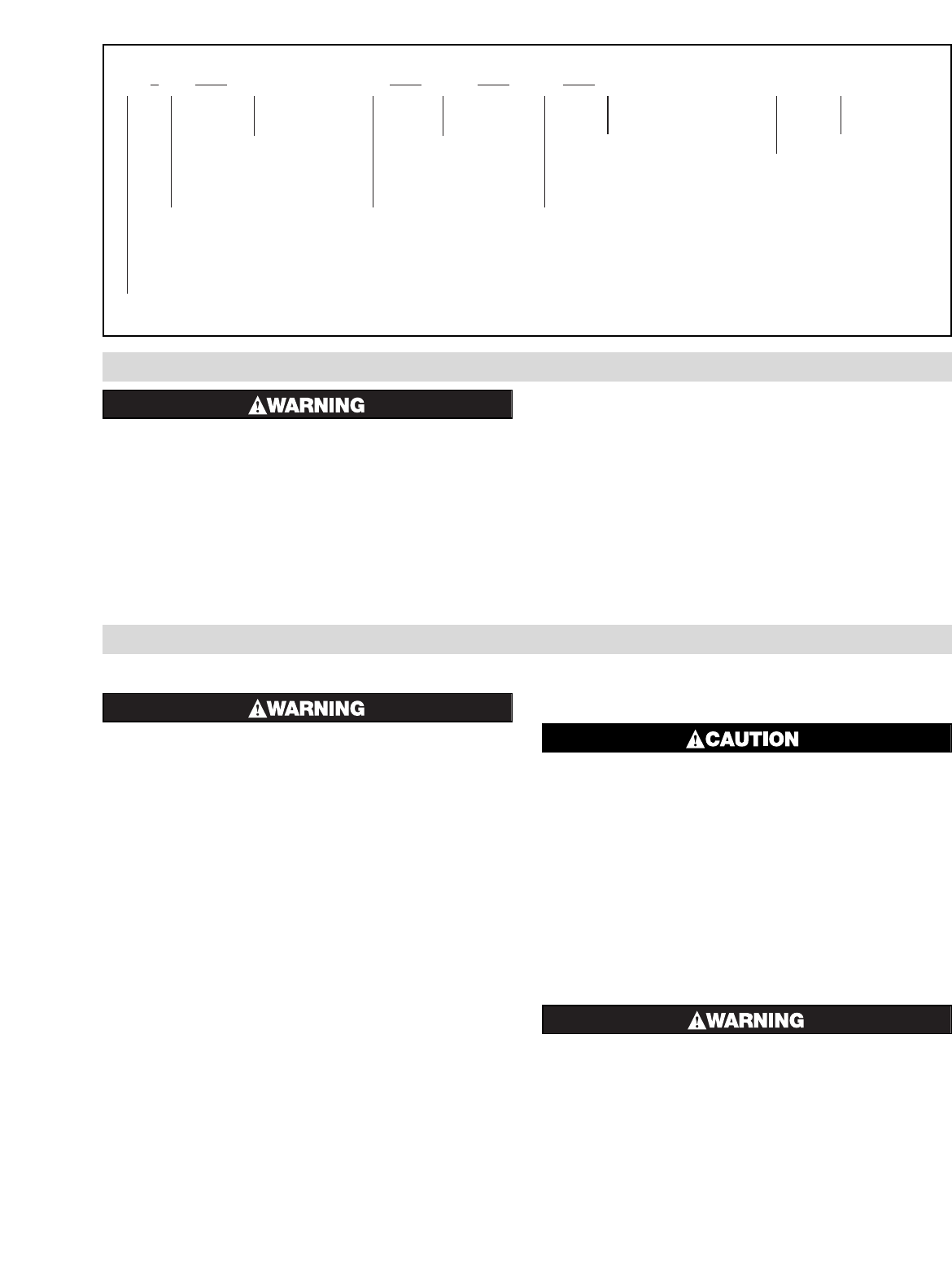
7
OPERATION
EXPLOSION HAZARD. Heater should not be operated
in ambient temperature higher than 40˚C (104˚F) or in
atmospheres corrosive to the heater itself.
1. The CXH-A unit heaters use a sealed water-glycol filled heat
exchanger. The electric immersion elements transfer heat energy
directly to the fluid generating a fluid/vapor mixture which releas-
es its heat energy to the finned radiator as it rises and recondenses
back to the bottom reservoir to be reheated. This cycle will con-
tinue as long as fan forced air is available on the finned structure
to remove the heat to the airstream.
2. The finned structure of the heat exchanger must be kept clean and
free of accumulated dust and dirt. The cabinet front panel is easily
removed providing access to the heater core for periodic cleaning.
3. Unit should not be operated with louvers fully closed. Mechanical
stops are incorporated into the design of the cabinet to limit the
degree of closure. Do not force the louvers beyond these stops.
4. If specified, units are supplied with a built in alarm pilot lamp
which will energize if the manual reset control has a been activat-
ed. During unit startup, the lamp will flash on momentarily to ver-
ify its operation.
MAINTENANCE AND REPAIR
EXPLOSION/ELECTRIC SHOCK HAZARD. Disconnect
all power before opening enclosure covers or servic-
ing heater. Failure to comply could result in personal
injury or property damage.
1. Periodically inspect all electrical connections and terminals to
avoid electrical wiring difficulties. Inspect all wiring for frayed or
worn insulation.
2. Periodically and before each heating season, clean the finned heat
exchanger and fan inlet with compresses air, vacuum, or water jet.
Be sure all electrical covers are tightly closed.
3. If heat output seems to be low, check amperage draw on each ele-
ment. Compare measured values to the correct currents as listed
on the unit nameplate.
4. The thermally protected fan motor is permanently lubricated and
sealed. No field servicing is required or should be attempted.
Replace only with a factory supplied identical motor. Failure to
do so will void the factory warranty and may expose the user to
risk of ignition of hazardous atmospheres.
5. Check fan blade to be sure that set screws are tight and there are
no cracks or looseness in the blades. Use factory supplied replace-
ment blade only.
6. Check for any sign of leaking from the heat exchanger. Too little
fluid will cause the manual high limit to trip.
7. The sealed heat exchanger contains a glycol/water solution of
propylene glycol. Ethylene glycol is supplied for arctic duty con-
ditions only. Avoid contact with skin and eyes. If ingestion should
occur, seek medical attention immediately. In case of eyes or skin
contact, wash affected areas with large amounts of water. The
MSDS (Material Safety Data Sheet) for these materials is
available upon request.
I. REPLACING THE HEAT EXCHANGER
BURN HAZARD. Be sure heat exchanger and fluid has
been allowed to cool to 110˚F before proceeding.
1.
Detach the cabinet front by removing screws from all sides of unit
and pulling cover forward off cabinet shell. Detach bottom panel by
removing two screws on each side and two screws in the rear.
Remove the electrical control enclosure lid. Disconnect the heater
and high limit wires from the electrical control enclosure. Loosen
electrical conduit union located between the heater housing and the
electrical control enclosure. Support the lower end of the heat
exchanger and loosen the three hex head bolts which hold it to the
sheet metal. Lower the heat exchanger away from the sheet metal.
Reverse the above procedure when installing a new heat exchanger.
II. RESETTING MANUAL RESET LIMIT CONTROL
EXPLOSION HAZARD. Be sure that all enclosure cov-
ers are replaced and tightly closed before re-energiz-
ing unit after servicing electrical components.
High limit controls must never be bypassed in control
circuit.
The factory must perform the replacement of the
immersion heater or overtemperature cutout. The
heat exchanger seal must not be broken. Consult fac-
tory for service.
Maintenance and repair must be performed by qualified personnel only.
Electric Blower Unit Heater for Hazardous Locations
Heating Element Rating
03 = 3.0 kW 18 = 18.0 kW
05 = 5.0 kW 20 = 20.0 kW
07 = 7.5 kW 25 = 25.0 kW
10 = 10.0 kW 30 = 30.0 kW
15 = 15.0 kW 35 = 35.0 kW
Heater Voltage
2 = 240V 6 = 575V
3 = 380V 8 = 208V
4 = 480V 9 = 600V
5 = 415V
Phase
1 = 1 Phase
3 = 3 Phase
30 = 24V Controls
32 = 120V Controls
00 = No Thermostat
40 = Thermostat
1 = Ethylene Group C & D, E, F, G T3B
2 = Propylene Group C & D, E, F, G T3B
3 = Ethylene Group C, D, F, G T3B
4 = Propylene Group C, D, F, G T3B
0 = No Options
1 = 15 or 30 Amp Disconn. Switch
2 = 60 Amp Disconn. Switch
3 = Pilot Light
4 = Pilot Light and 30 Amp
Disconn. Switch
5 = Pilot Light and 60 Amp
Disconn. Switch
6 = Summer Fan Switch
7 = Summer Fan Switch, Pilot Light
8 = Disconn. Switch with Summer
Fan Switch
9 = Disconn. Switch, Pilot Light
with Summer Fan Switch
CXH-A
10 4 3 30 40 11EP
Explosion Proof
MODEL NUMBER DESCRIPTION



